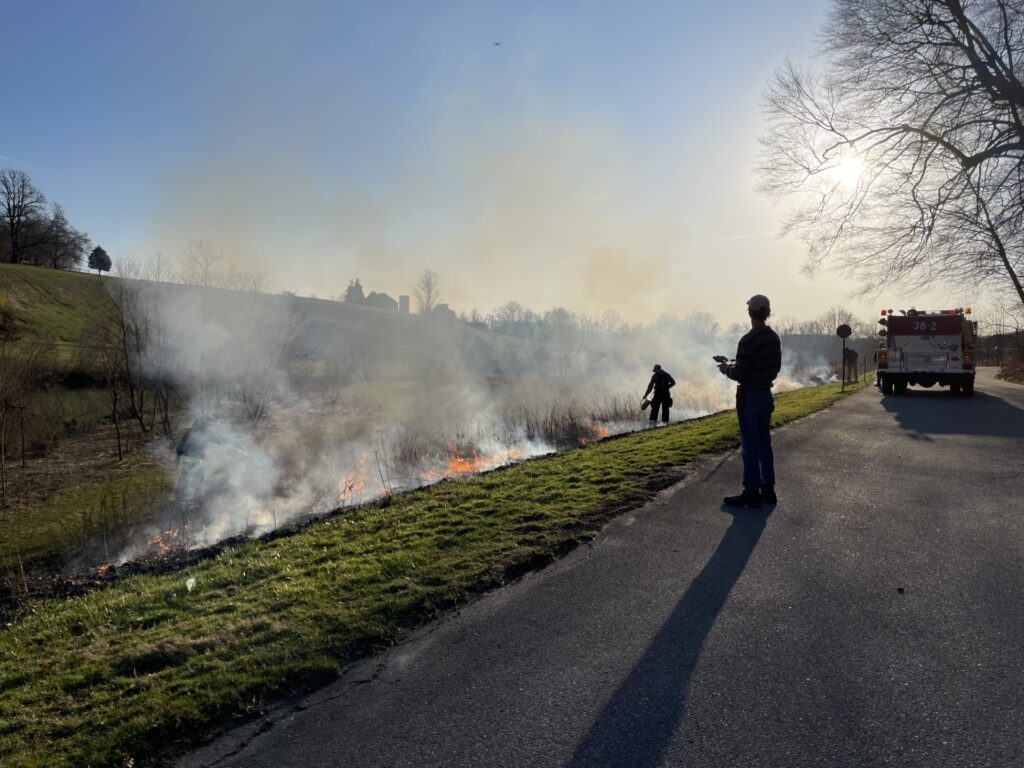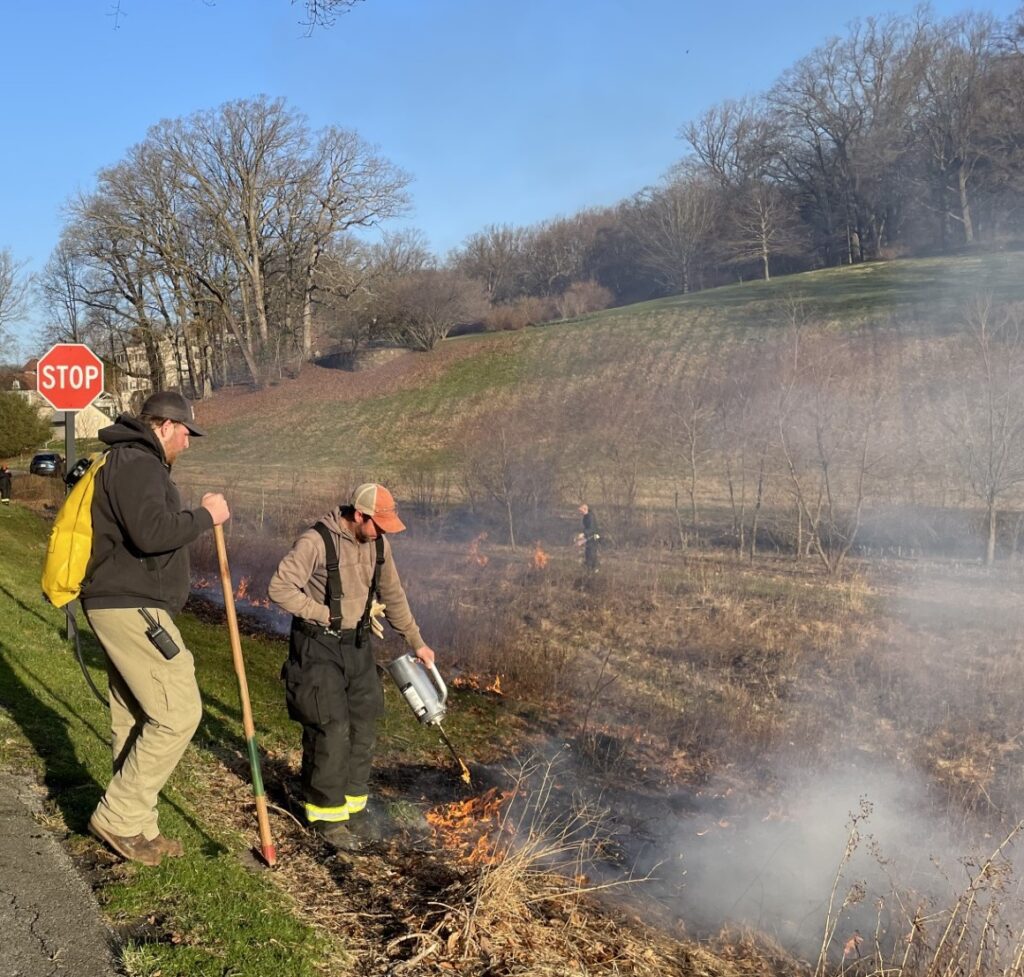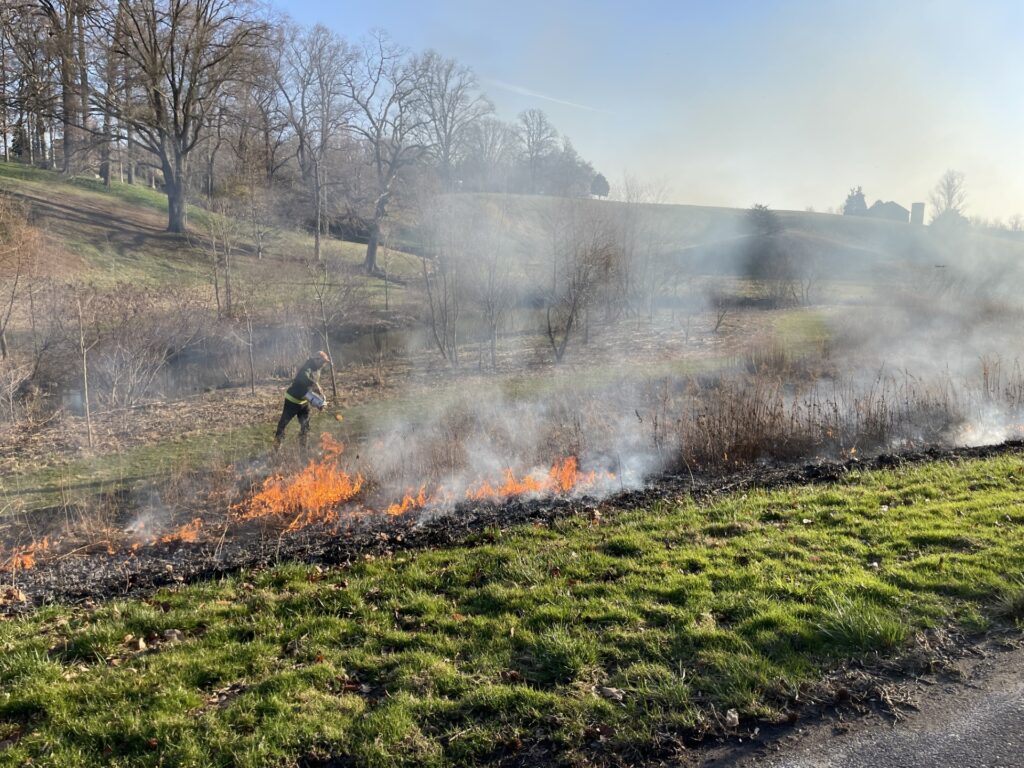Tendrils of haze drifted across a meadow at Winterthur on a cool morning in early March…a familiar sight after a wet and misty winter. But this was not water vapor rising from a thawing field. It was smoke from vegetation set ablaze on the grounds of the estate.
Winterthur’s Arboriculture and Natural Lands team, in collaboration with the Winterthur Fire Department, had embarked on a journey of rejuvenation through prescribed burning. A marshy meadow along the back drive and a slice of the East Barn wetlands were consumed by controlled flames, dancing with the promise of renewal.

Prescribed burning is not an inferno driven capriciously by the availability of tinder and the arrival of a spark and wind. In fact, Kevin Braun, supervisor of arboriculture and natural lands, had even delayed the recent managed blaze by one day due to the possibility of high winds.
A prescribed burn is not about wanton destruction but rather strategic land management.
“Controlled burns are akin to nature’s reset button, benefiting wildlife, combating invasive species, and fostering the growth of native flora,” Braun said. It’s like giving Mother Nature a spa day, complete with a detox and facial.

Our estate is a tapestry of habitats, and these prescribed burns serve as catalysts for biodiversity. Think of it as an open invitation to avian friends like the eastern bluebird, red-winged blackbird, and eastern meadowlark, beckoning them to nestle in our replenished grasslands.
Birds aren’t the only ones RSVPing to the targeted areas. Native pollinators like monarch butterflies and industrious bees eagerly flit among native meadow flowers and grasses, which flourish in the aftermath of a well-executed burn.
And it’s not just about the birds and the bees. By bidding adieu to thatch (the pesky buildup of cut grass), we’re liberating our meadow plants from suffocation and ensuring that vital nutrients aren’t held hostage beneath a blanket of dry grass. It’s like spring cleaning for the soul of the land, clearing away the clutter to make room for new growth and vitality.
There are practical benefits, too. “The areas we set ablaze aren’t exactly the friendliest to mowers,” Braun added. Marshy meadows and soggy wetlands make for treacherous terrain when it comes to traditional land management techniques. The process also minimizes the spread of pests and plant diseases.
With prescribed burning, we’re reclaiming these inaccessible spaces, transforming them into havens of biodiversity and beauty. So, as the smoke dissipates and the embers fade, what remains is not just charred earth, but a promise—a promise of vibrant ecosystems, thriving fauna, and a landscape teeming with life. Here at Winterthur, we’re not afraid to embrace the flames, for we know that within their flickering dance lies the secret to renewal and regeneration.
